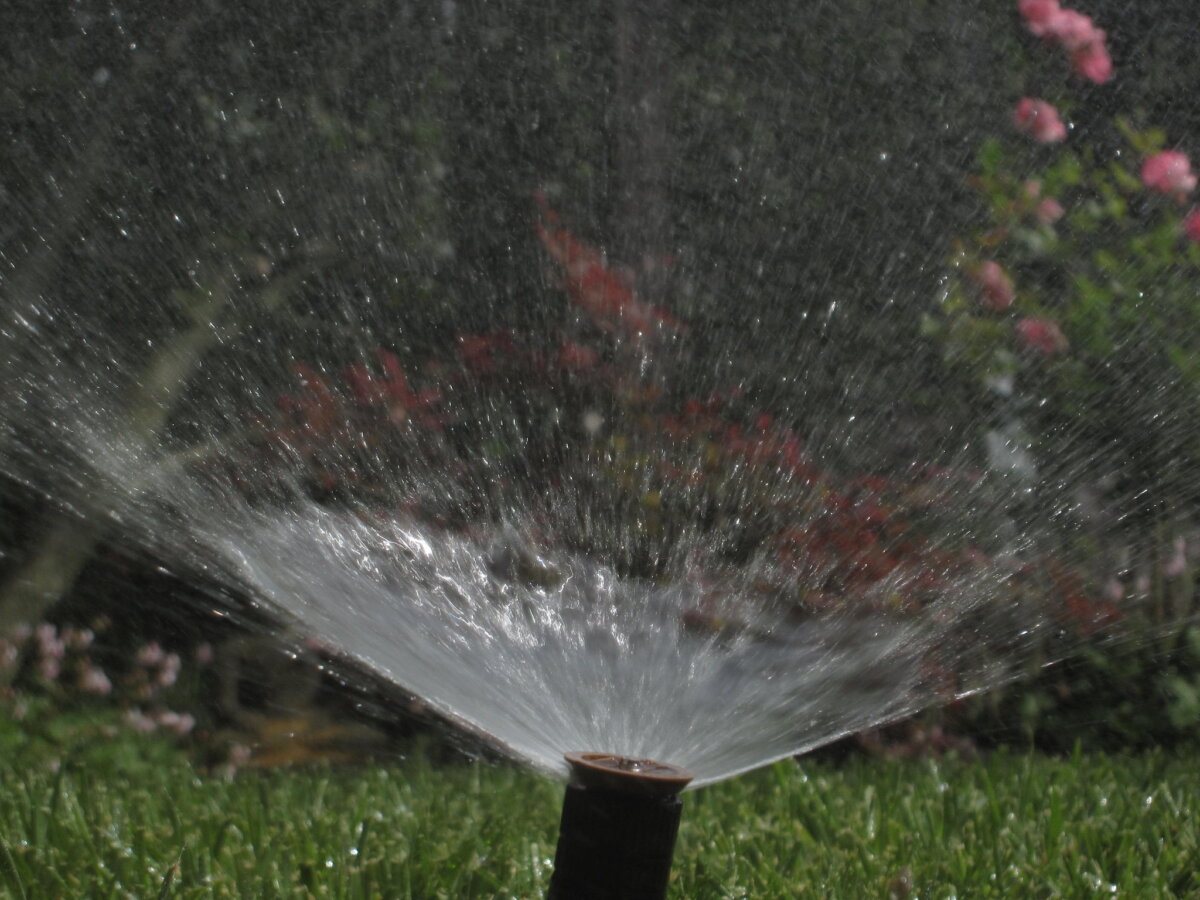
Help your lawn beat the heat. Water your lawn! Fabrice Florin, Flickr.
It is really hot this week. Don’t forget to water your lawn!
Good watering practices are key to a healthy lawn that will naturally resist weeds, moss and insect pests. Bottom line: water your lawn slowly and deeply from May to October.
Your lawn needs one to two inches of water per week, depending on site, soil and rainfall.
How to measure one inch of water
Here is a short video about how to measure one inch of water from your sprinkler.
It is much better to water your lawn once or twice a week rather than daily. This will encourage it to grow deeper roots, making it more resilient. The shorter the roots in the lawn, the quicker the lawn will go into a dormant state at the first signs of dry weather.
A lawn will need less water in summer if the soil system is healthy. If roots are growing deeply into the soil, it does not take a lot of water to keep a lawn growing.
It is best to water the lawn in the morning before it gets too hot, so your lawn can absorb the water before it evaporates. If you water midday, you will waste most of the water.
More on lawn watering
Here is a video on smart lawn watering, featuring In Harmony co-owner Ladd Smith.
And here are some details about how to choose and use lawn sprinklers from This Old House.
Don’t let your lawn go dormant in summer
Some people who want to be environmentally friendly stop watering their lawn in the summer. They think conserving water is a good thing. We are not suggesting that you waste water.
But a lawn that goes dormant becomes thin and unhealthy. And you will have bare spots where it has died out. All dormant areas are ripe for weeds, moss and insect pests to invade when rains return in the fall.
Using water in the summer is more environmentally friendly than using pesticides in the fall. Keeping the lawn healthy is the most important step in preventing the need for pesticides.
Dandelions, false dandelions, clover, oxalis, plantain and many other weeds like the hot dry weather. They are still functioning, putting out more roots and producing more seeds while our lawns are quiet. If you have weeds and you let your lawn go dormant, you will always have weeds. And moss will move into thin areas too.
Likewise, if your lawn has been invaded by insects such as crane flies or chafer beetles, you need to continue regular watering, at least an inch a week. Keeping your lawn green and healthy will help it outgrow any insect damage.
Letting a healthy lawn outcompete weeds and other pests is how Mother Nature works. But only if your lawn is a living, thriving weed barrier.
Also, our summers have become hotter and drier as the climate changes, making it even harder on lawns. Some years we have even seen drought conditions in May.
Check out our YouTube playlist
Would you like to know more about how to water efficiently? Save money and help your plants stay healthy by learning some basic watering principles and practices. Our YouTube channel has a playlist called Watering Your Lawn and Garden with nine videos about smart watering, tools and timers, mulch and more.
Photo: Fabrice Florin, Flickr. License.
